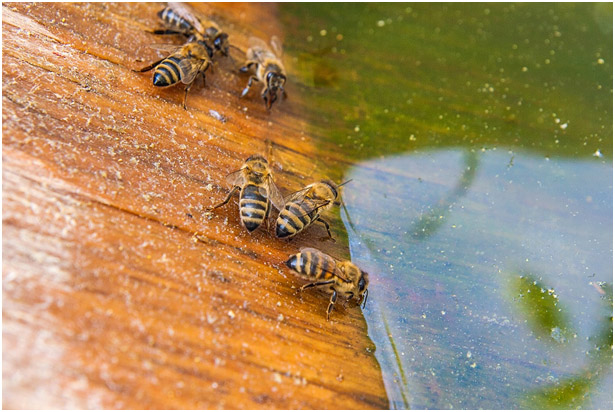Bees love flowers – that much is obvious to an untrained eye. But if you’re a budding apiarist, you’ll need to know what it really means to plant a bee-friendly garden.
In this article, we will be exploring several steps you can take to ensure your garden is a healthy, encouraging place for honey bees. Whether you are thinking about beginning bee-keeping or just want to do bees a great service, there are simple steps you can take to ensure your garden area is a bee haven.
Plant bee-friendly plants
Honeybees love floral plants that give off lots of nectar and pollen. The most well-known of these are lavender and calendula (itself a useful medicine for bug bites and bee stings!).
Additionally, it pays to go colourful – bees love flowers that are bright. Blues, purples, and yellows are their favourites. Unfortunately, bees are colour-blind to red, so red flowers struggle to attract bees.
Other great bee-friendly plants include:
- Rosemary
- Sunflowers
- Nasturtiums
- Bee Balm
- Marigolds
- Oregano
- Thyme (particular the creeping varieties)
- Basil
- Sage
Don’t neglect fruiting plants as well. In addition to providing great fruit and vegetables to eat, they can provide excellent nectar and pollen sources to bees. Great fruit and veg plants include:
- Courgettes
- Pumpkin
- Blackberries
When it comes to your garden, variety is crucial for bees. Having a wide range of options for bees to land and draw pollen from will help them thrive.
For ease, planting a mixture of annual flowers and perennials will keep your garden lively. As winter draws to a close, you will be typically preparing to plant your annuals – although the planting times depend on whether you are growing from seed or bulbs, or existing plants. Perennials are easier, needing only to be properly trimmed as winter arrives. Then, as perennials die back through autumn and winter and return in spring, they provide a consistent source of nectar for your bees right when they need it (and herbs and flowers for you).
Ensure you are an easily accessible water source
All living creatures need water to survive. Ensuring you have an adequate water supply can help bees immensely.
A small, shallow pond or a birdbath are great options. Bees need places to rest and collect water. If you have a birdbath, a small stone in the bath itself can provide a suitable landing pad.

Minimise use of pesticides and garden organically
We now know that part of the blame for colony-collapse disorder across the world can be attributed to our use of pesticides, particularly insecticides containing neonicotinoids.
A great way to reduce pesticide impact locally is to garden organically. Bee-friendly pesticides do exist, but there are always a number of ways to keep pests out of your garden. The first step is to keep your plants well-watered and fertilised to ensure a strong plant. Plants that are less well-watered and fed are more susceptible to insects.
If you have to use pesticides, there are steps you can take to mitigate bee damage. This includes avoiding spraying when your plants are flowering, and spraying your plants at times when bees are less active, like early morning and dusk.
Considering taking your passion for bees further?
At Nuplas Apiarist Supplies we have all the beekeeping supplies you need to establish yourself as a new beekeeper, including bee hive kits, frames and protective gear. Our innovative injection-moulded plastic bee hives are strong, resistant to weather, and safe for bees. Learn more about why Nuplas supplies are right for you here.
If you are looking for more advice on beginning as a beekeeper, read our guides to better beekeeping.
